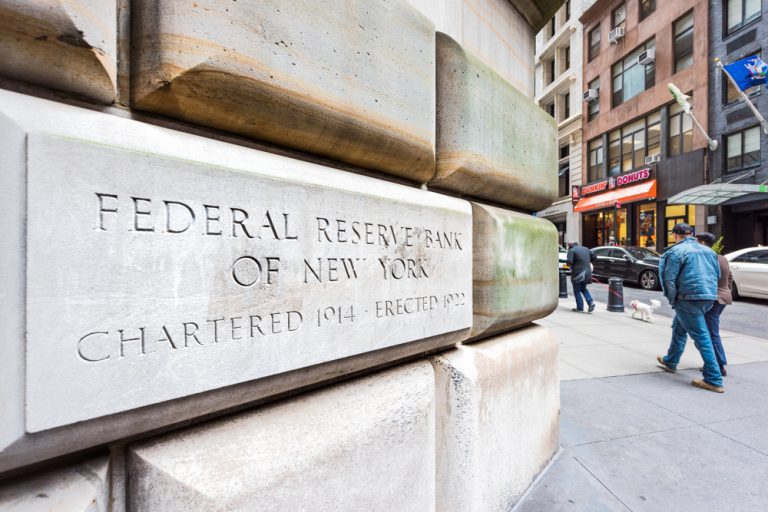Bank-to-Bank Digital Currency Poses Threat to Stablecoin Appeal

A bank-to-bank digital currency may threaten the appeal of traditional, privately-issued stablecoins.
News came last month that the New York Fed has seen the benefits of such an option (via central bank digital currencies), and is working on Project Cedar, a multiphase research effort with other monetary authorities to develop a central bank digital currency (CBDC) focused on wholesale activities.
Wholesale Transactions in Focus
The advantages lie in the reduced time for settlement of cross-border transactions to mere seconds from as long as several days. Though the road may be a winding one for the issuance and implementation of such a digital currency, the testing phase of Project Cedar found that in addition to speed, the wholesale transactions were also safer and more accessible to those banks.
And in the safety aspect, we note there’s room for that bank-to-bank option to displace the private stablecoins that are tied to various blockchains. Theoretically, there’s room for a wholesale CBDC and for privately issued stablecoins to coexist. Still, in light of the rockiness of the stablecoin market in a post-FTX world, the question remains as to just what the future of the latter might hold.
For now, stablecoins are the main option for those commercial (and retail) transactions where holders wish to sidestep most of the volatility of traditional cryptos, though bitcoin has some presence. There’s already evidence that digital options are gaining favor in the corporate world.
PYMNTS research has shown as many as 58% of firms use at least one crypto; bitcoin is the most widely used crypto at 31% of those respondents with sales of between $250 million to $1 billion, followed by stablecoins at 29%.
But as has been noted in this space in recent weeks, we’ve seen any number of instances where stablecoins — backed by baskets of currencies or liquid, short-term trading vehicles like commercial paper — have “depegged” from those backstops. The volatility of the crypto sector itself (and the FTX implosion) has bled over into the stablecoin space.
Depegging is a Risk
In just a few recent examples, Tron’s USDD stablecoin lost its peg, falling to 97 cents, and TerraUSD collapsed earlier this year.
There’s worry over the liquidity of these stablecoins and whether they can “truly” be believed to have $1 to $1 parity with a USD dollar (an example of just one model). The stablecoins that are “almost’ always worth $1 fall short when “almost” won’t cut it in cross-border trade.
If, or when, we see the emergence of bank-to-bank wholesale CBDC privately-issued options that have been marked by depegging risk face a reckoning. Tokenized deposits, which offer claims on existing bank deposits, provide a measure of safety that has thus far eluded the stablecoin landscape.
The Clearing House has said recently in a paper that stablecoins have been “solely in the hands of entities that are not subject to the full range of capital, liquidity, cybersecurity and other safety and soundness and customer protection requirements applicable to federally regulated banks.” By putting those creations more fully in the hands of the fully regulated financial institutions (FIs), and with CBDCs, too, the runway becomes clearer for global transfers to take a huge digital leap forward.
